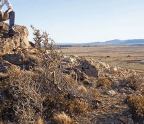California Cabernet Sauvignon 2017 & 2018
Cabernet Sauvignon is a grape made for California. It excels in the long, sunny, warm and dry summers, enabling it to gain good physiological ripeness, and its thick skin means it can stand up to California’s sunshine. It is the most widely grown, with more than 38,000ha planted in 2020 (NASS/USDA, April 2021). Given its wide range of altitudes and terroirs, California can grow and make Cabernet Sauvignon to suit all styles and palates. And, as the 1976 Judgement of Paris tasting showed, California Cabernets can stand alongside the world’s best.
I and my fellow judges were enthusiastic to taste two vintages of California Cabernet and, as we discovered, in 2017 and 2018, vintage did make a difference. ‘2017 was a vintage of highs and lows,’ said Stefan Neumann MS. There is no doubt that it was a challenging one in California. The year started out promisingly – five years of drought ended, with plenty of rainfall over the winter and a mild spring that slowed down flowering. The summer was dry and hot, culminating in a heat spike in early September that caused some vines to shut down, stopping ripening. Wineries had to make hard decisions around whether to let grapes ripen further or pick. The wildfires, which started on 8 October, had minimal impact on grape quality as most of the harvest was done. We detected no smoke taint.
The results? Some very good 2017 wines with balance and finesse, but wines that had a high degree of alcohol with unripe tannins. ‘I was less surprised by the high alcohol, more by the green tannins,’ said James Doidge MW. For Neumann there was ‘lots of variation’. There were some elegant wines but, equally, plenty that were over-extracted and lean; ‘skinny wines’ is a term often associated with the 2017 California Cabernets. There were no real standouts as far as AVAs or regions. This is a vintage where you need to trust the reputation of the producer and buy accordingly.
The 2018 vintage also started off with plenty of rain during the winter season and a cool spring, but in contrast to 2017, the 2018 growing season was long, warm and without any significant heat spikes. On average, most regions picked two to three weeks later than in 2017, with the longer hang-time ensuring good phenolic ripeness. Grapes were plentiful and healthy, with ripe fruit and tannins, and lots of body. In general, ‘the wines were consistent’ said Neumann, ‘representing all regions and styles – plenty to choose from’.
You’re reading a preview, subscribe to read more.
Start your free 30 days





